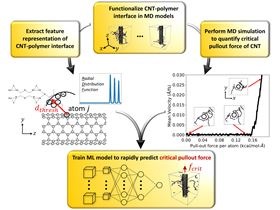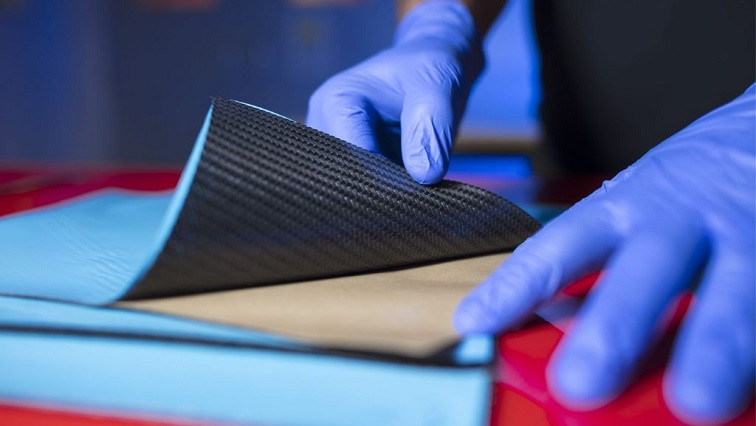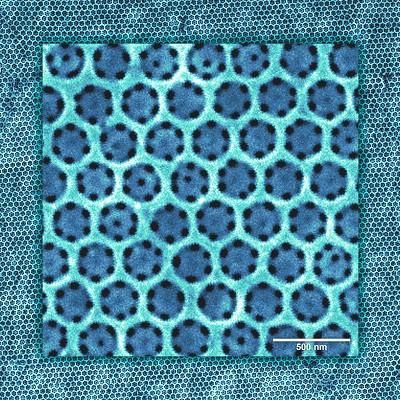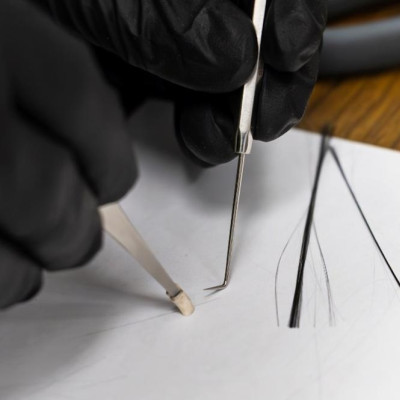Carbon nanotube (CNT)-reinforced composites promise exceptionally strong lightweight materials for aerospace applications. But the exceptional mechanical properties of CNTs are not always preserved in composites because of weak interactions with the polymer matrix. Functionalizing CNTs can improve interfacial strength, but the number of variables – including the type of functional group, bulk polymer, and how the polymer chains entangle – make molecular dynamics (MD) simulations of potential outcomes highly complex and computationally expensive.
Now researchers from the University of Utah and Michigan Technological University, part of the NASA Space Technology Research Institute US-COMP, have devised a clever shortcut using machine learning [Rahman et al., Composites Science & Technology 207 (2021) 108627].
MD simulations are used to estimate pullout strength – the force needed to drag a nanotube out of the matrix – as an indication of interfacial interactions between CNTs and the surrounding polymer. To avoid calculating every possible interaction, the researchers used representative values of interfacial strength in a CNT-epoxy system to train a machine learning (ML) algorithm to predict pullout forces.

Workflow combining molecular dynamics and machine learning to accelerate failure predictions in CNT-polymer systems.
“To support [the] tailoring of the chemistry at the CNT-polymer interface to maximize the amount of force needed to extract the CNT from the matrix, we need a way to rapidly estimate the critical pullout force,” explain Ashley D. Spear, who led the work, and first author Aowabin Rahman.
The model is based on specific molecular signatures or features that uniquely define the CNT-polymer interface. Using these characteristic signatures, different CNT-polymer systems can be modelled. The training data is augmented to get the most out of the limited number of expensive MD simulations needed. The resulting data is plugged into an ML model called a convolutional neural network (CNN) to map the spatial distribution of features determining the CNT pullout force.
“Once trained, the CNN serves as a surrogate model for more computationally expensive MD simulations,” points out Spear. “It can make predictions in a matter of seconds on a basic laptop whereas the corresponding MD simulation might take anywhere from 300-1500 hours, which translates to days on a high-end workstation or cluster.”
The model promises to allow exploration of the interface between CNTs and the polymer matrix, optimizing the chemical environment to maximize bulk-scale mechanical properties of CNT-polymer composites. The team are currently working on ML models that provide an even better picture of the connections and interactions between polymer chains on CNTs and in the matrix.
“This approach will enable tailorable CNT composites by computational design, focusing specifically on tailoring the interfacial chemistry to achieve the best possible bond between the CNT and the matrix,” says Spear. “If we can achieve this, we believe that the strength of bulk CNT composites can surpass what is currently possible.”
Read the original article on Materials Today.







